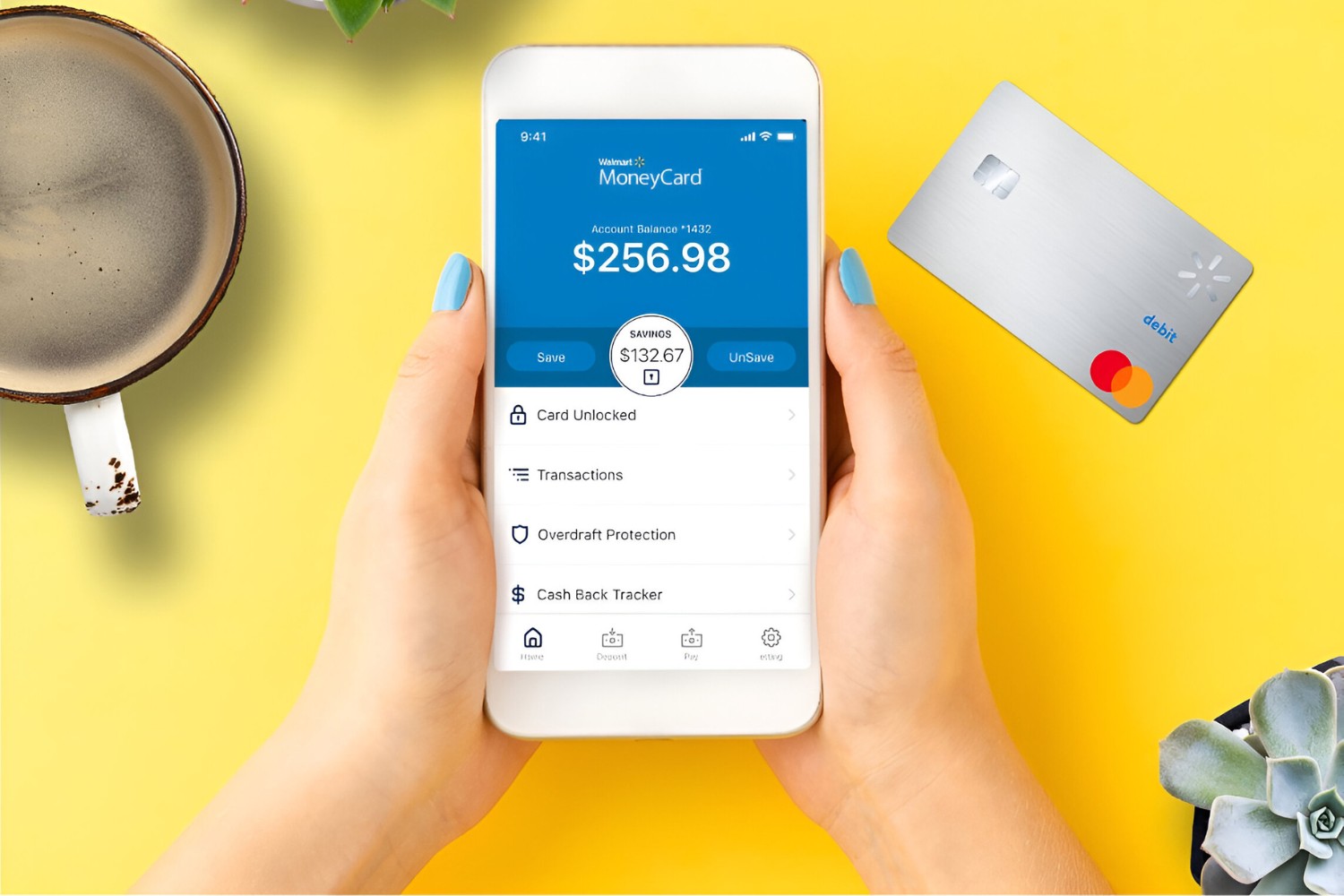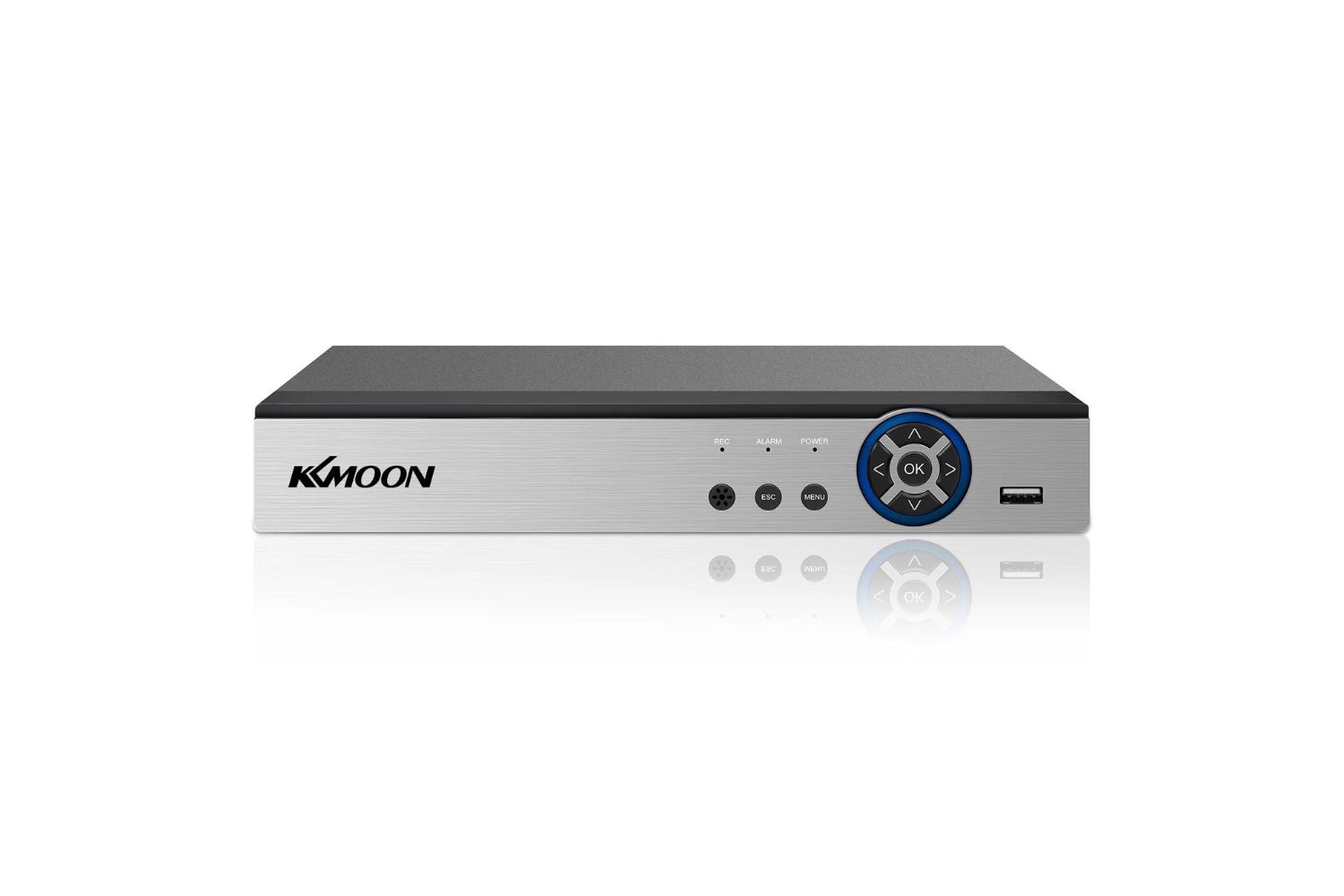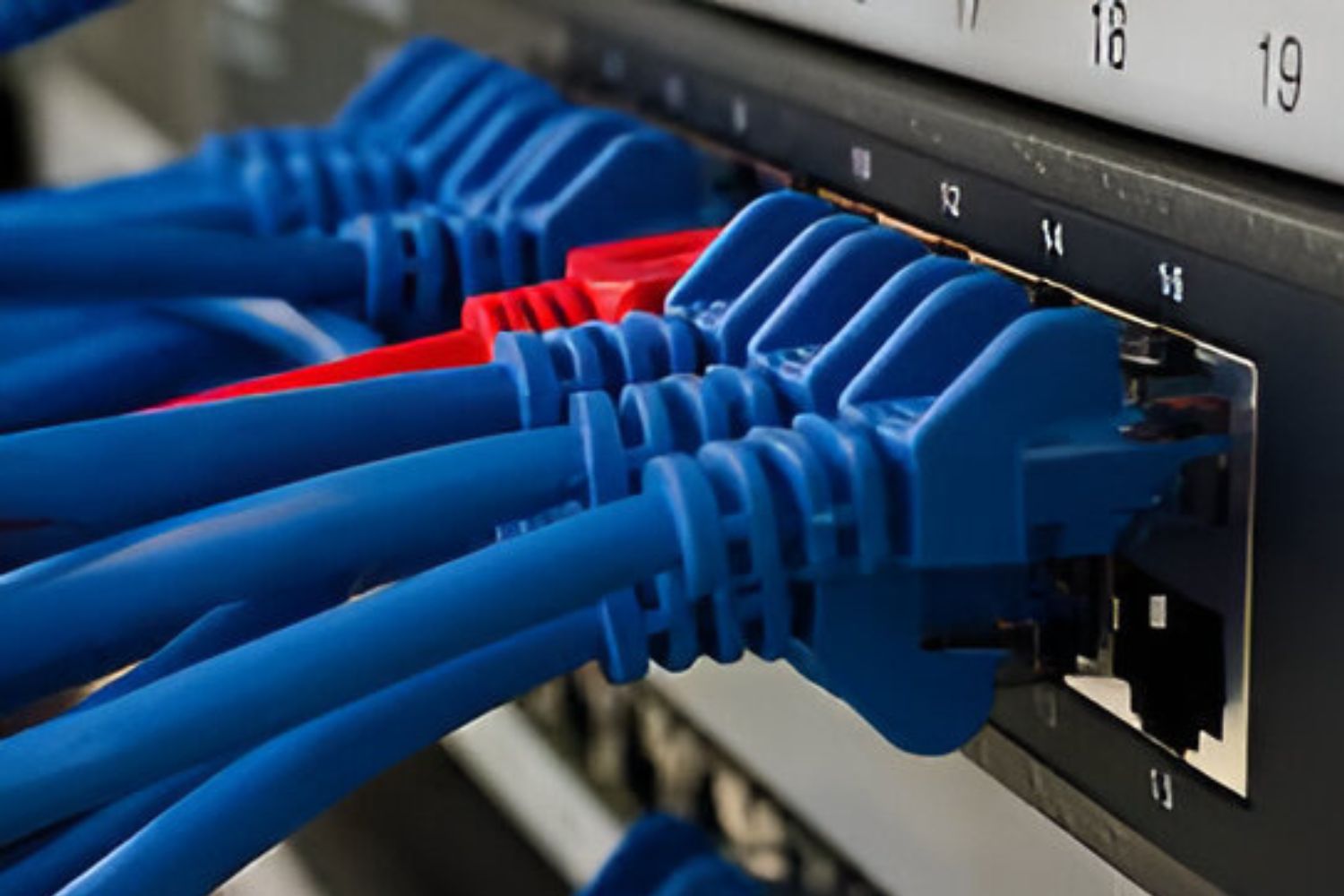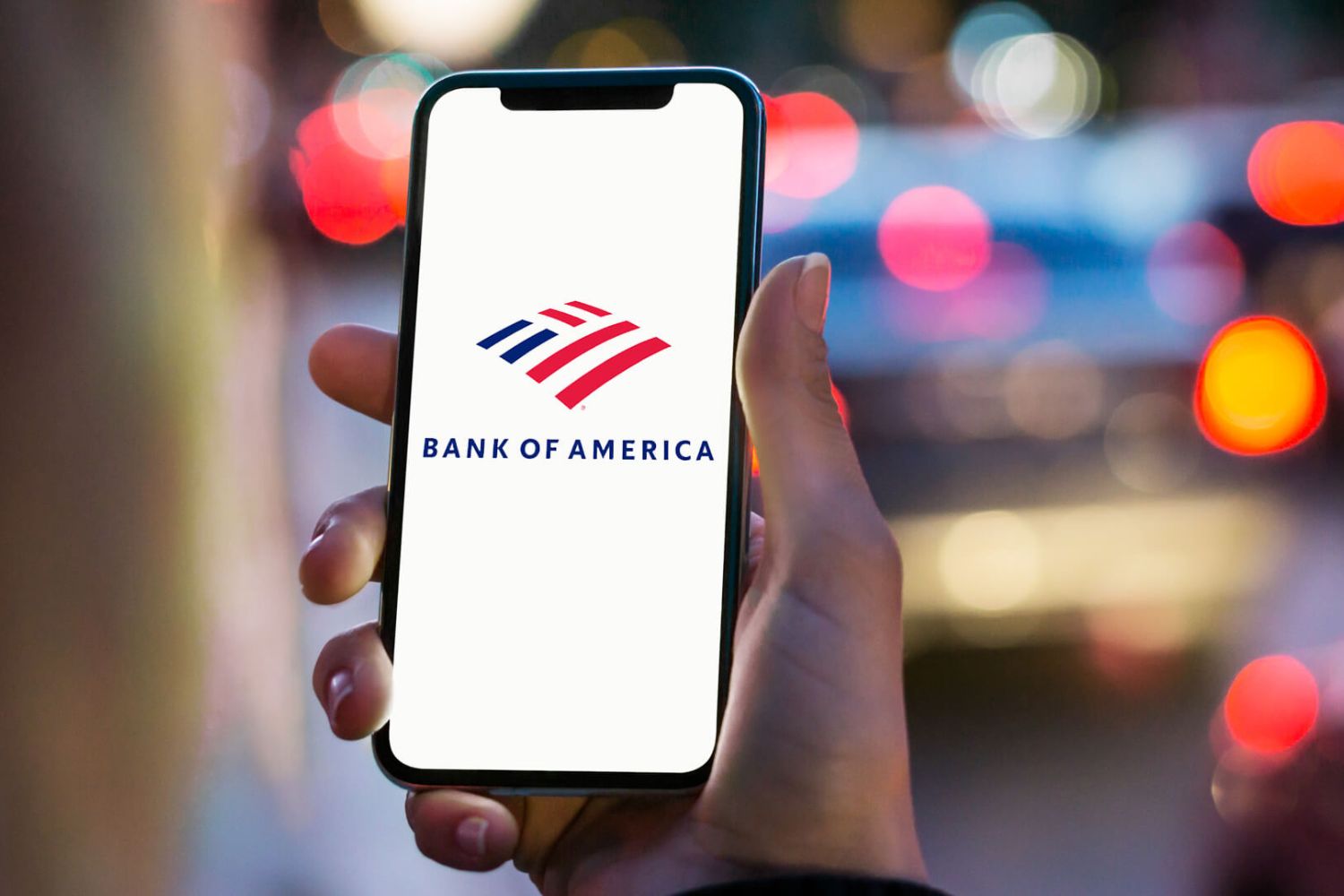Introduction
Walmart, the world’s largest retailer, employs advanced systems to streamline its operations and maintain efficient supply chain management. One crucial aspect of their operations is the implementation of a Procure-to-Pay (P2P) system. P2P simplifies and automates the purchasing process, allowing Walmart to efficiently procure goods and services from their suppliers.
P2P, short for Procure-to-Pay, refers to the end-to-end process of requisitioning, ordering, receiving, and paying for goods and services within an organization. It provides a structured workflow that optimizes the procurement process, ensuring compliance, reducing errors, and improving efficiency.
At Walmart, the P2P system plays a vital role in ensuring timely and accurate procurement, which is essential for their vast inventory and extensive network of stores. By integrating technology and streamlining processes, Walmart aims to enhance operational efficiency, minimize costs, and ultimately deliver a seamless shopping experience to their customers.
In this article, we will delve into the workings of Walmart’s P2P system, exploring the steps involved, the benefits it brings, and the challenges it faces.
What is P2P?
Procure-to-Pay (P2P) is a business process that encompasses the entire cycle of purchasing, from requisitioning to payment. It involves various steps, including identifying the need for goods or services, selecting suppliers, placing orders, receiving goods, and processing payments. The goal of P2P is to streamline and automate the procurement process, ensuring accuracy, efficiency, and cost-effectiveness.
The P2P process begins with the requisition stage, where employees or departments identify their requirements for goods or services. This can be done through an online platform or a request form. Once a requisition is submitted, it goes through validation and approval processes to ensure it complies with the company’s procurement policies and budget limitations.
After approval, the purchasing phase begins. This involves creating purchase orders (POs) to send to the chosen suppliers. The PO contains all the necessary information, such as item descriptions, quantities, agreed-on prices, and delivery dates. The suppliers then fulfill these orders by delivering the goods or performing the services requested.
Upon receiving the goods or services, the next step is the receiving stage. This involves inspecting the delivered items to ensure their quality, quantity, and compliance with the initial order. Any discrepancies or issues are addressed and recorded to resolve them with the supplier if necessary.
Finally, the payment stage completes the P2P process. In this step, invoices are generated based on the received goods or services and matched against the corresponding POs. Payment terms and conditions are validated, and the invoices are processed for payment, either through manual or automated systems.
By implementing a P2P system, companies like Walmart can achieve numerous benefits. It brings efficiency and transparency to the procurement process, aligning it with organizational goals and financial controls. It also enhances compliance with regulations and minimizes the risk of fraudulent activities by maintaining proper authorization and documentation throughout the entire purchasing cycle.
Overall, the P2P process helps businesses streamline their procurement operations, optimize resource allocation, and build strong relationships with suppliers, leading to cost savings and improved vendor management.
The Role of P2P in Walmart
P2P plays a crucial role in Walmart’s operations, enabling the company to effectively manage its procurement processes and maintain a strong supply chain. With numerous stores and a vast inventory to manage, Walmart relies on the P2P system to enhance efficiency, control costs, and ensure timely delivery of goods and services.
First and foremost, the P2P system at Walmart helps to centralize and standardize the procurement process. By implementing a consistent workflow, it allows for better coordination between different departments and reduces the risk of miscommunication or errors. This standardization also supports compliance with internal policies and external regulations, ensuring that all purchasing activities adhere to the required guidelines.
The automation capabilities of the P2P system are also integral to Walmart’s success. By automating various tasks, such as requisitioning, supplier selection, and payment processing, the system saves time and reduces the likelihood of manual errors. This efficiency allows Walmart’s procurement team to focus on strategic activities rather than getting bogged down in administrative tasks.
Furthermore, the P2P system provides valuable data and analytics for Walmart to make informed purchasing decisions. By capturing and analyzing information on spending patterns, supplier performance, and contract management, the system enables Walmart to identify cost-saving opportunities, negotiate favorable terms with suppliers, and optimize its purchasing strategies. This data-driven approach strengthens Walmart’s position in negotiations and helps drive down procurement costs.
Another essential role of the P2P system in Walmart is supplier relationship management. The system facilitates seamless communication and collaboration between Walmart and its suppliers. It enables effective tracking of orders, delivery status, and quality control, ensuring that the products received are of high quality and aligned with Walmart’s standards. By fostering strong supplier relationships, Walmart can secure competitive pricing, prompt delivery, and continuous improvement in the quality of goods and services.
Overall, the P2P system plays a critical role in supporting Walmart’s procurement operations. It improves efficiency, reduces costs, enhances compliance, and strengthens supplier relationships. With the P2P system as a foundation, Walmart can effectively manage its procurement processes and maintain its position as a leading retailer.
The P2P Process at Walmart
Walmart has a well-defined and efficient Procure-to-Pay (P2P) process that enables smooth and effective procurement operations. The P2P process at Walmart consists of five key steps: requisition, approval, purchasing, receiving, and payment.
The first step in the P2P process is requisition. Walmart employees or departments identify their needs for goods or services and submit requisitions through an online platform. These requisitions contain details such as the item description, quantity, and desired delivery date. The system automatically validates the requisitions and checks for budget availability and internal compliance.
Once a requisition is validated, it goes through the approval stage. The requisition is reviewed by the appropriate stakeholders, such as managers or supervisors, who assess the requested items’ necessity and compliance with policies. They can approve, reject, or request modifications to the requisition based on their assessment. This approval process ensures that all purchasing activities align with Walmart’s guidelines and budget constraints.
After approval, the purchasing stage begins. Walmart’s procurement team creates purchase orders (POs) based on the approved requisitions and sends them to the selected suppliers. The POs contain all the necessary information, including item descriptions, quantities, agreed-upon prices, and delivery dates. This step ensures clear communication with suppliers and establishes a contractual agreement for the requested goods or services.
Once the suppliers receive the POs, they fulfill the orders by delivering the goods or providing the requested services. The receiving stage involves inspecting the delivered items to ensure their accuracy, quality, and compliance with the initial order. Any discrepancies or issues are addressed and recorded to resolve them with the supplier if necessary. This inspection step is crucial in maintaining the desired level of quality and ensuring customer satisfaction.
Finally, the payment stage completes the P2P process. In this step, invoices are generated based on the received goods or services and matched against the corresponding POs. The system verifies payment terms, validates the invoices, and processes them for payment. Walmart utilizes various payment methods, such as electronic funds transfer or check issuance, to settle the invoices within the agreed-upon terms.
The entire P2P process at Walmart is supported by robust technology infrastructure and integrated systems. This integration ensures real-time visibility into the procurement cycle, enabling stakeholders to track the status of requisitions, approvals, purchase orders, and payments. The seamless flow of information and automated processes enhance efficiency, accuracy, and compliance throughout the P2P journey.
By following this well-defined P2P process, Walmart can effectively manage and optimize its procurement operations, resulting in streamlined workflows, cost control, and efficient supply chain management.
Step 1: Requisition
The first step in the Procure-to-Pay (P2P) process at Walmart is the requisition stage. During this stage, Walmart employees or departments identify their needs for goods or services and submit requisitions through the designated online platform.
When creating a requisition, employees provide specific details about the items they require, such as the item description, quantity, delivery date, and any additional specifications. This information helps Walmart’s procurement team assess the request and ensure accurate fulfillment.
Once a requisition is submitted, it undergoes validation and verification checks to ensure compliance with Walmart’s procurement policies and budget limitations. The P2P system automatically validates the requisitions, checking for availability of funds and evaluating whether the requested items align with Walmart’s guidelines.
The validation process also includes double-checking the data entered in the requisition, such as the item description, quantity, and delivery date, to avoid any errors or inaccuracies. By implementing these validation checks, Walmart can maintain control over its procurement activities, ensuring that requests meet the necessary criteria.
After the requisitions pass the validation stage, they move on to the approval process. The approval process involves reviewing the requisitions by the appropriate stakeholders, such as managers or supervisors. These stakeholders assess the validity and necessity of the requested items, ensuring that they align with the department’s objectives and budgets.
During the approval stage, managers have the ability to approve, reject, or request modifications to the requisitions. If a requisition is approved, it proceeds to the next step in the P2P process. Rejected requisitions are sent back to the requester with a reason for rejection, allowing for clarification or adjustments to be made.
Throughout the requisition stage, transparency and communication play a vital role. The P2P system at Walmart provides real-time visibility into the requisition status, allowing employees to track the progress of their requests. It also enables seamless communication between requesters and approvers, facilitating any necessary clarifications or adjustments.
By having a well-defined requisition stage, Walmart ensures that all procurement activities begin with a clear understanding of the requested items and their alignment with Walmart’s guidelines and budgets. This step also promotes transparency, control, and efficiency in the overall P2P process, setting the foundation for accurate and timely procurement at Walmart.
Step 2: Approval
Once a requisition has been submitted during the Procure-to-Pay (P2P) process at Walmart, the next critical step is the approval stage. This is where the requisition undergoes review and evaluation by the appropriate stakeholders to determine its validity, compliance, and alignment with Walmart’s procurement policies and budget limitations.
The approval process plays a crucial role in ensuring that all requested items or services meet the necessary criteria and contribute to the company’s objectives. During this stage, managers, supervisors, or other designated approvers evaluate the requisitions based on various factors, such as the item description, quantity, justification, and departmental budgets.
One of the primary objectives of the approval stage is to assess the necessity and relevance of the requested items. Approvers review the requisitions to confirm that the requested goods or services support the department’s goals and align with Walmart’s overall procurement strategies.
Additionally, the approval process ensures compliance with internal procurement policies and external regulations. Approvers ensure that requisitions adhere to specific guidelines, such as authorized supplier lists, allowable spending limits, and contractual obligations. This step helps maintain consistency, integrity, and transparency within Walmart’s procurement operations.
During the approval stage, approvers also evaluate the financial implications of the requisitions. They analyze whether the requested items fall within the allocated budgets and assess the overall impact on the department’s financial resources. This evaluation promotes financial discipline and responsible spending, ultimately contributing to cost control and effective resource allocation within Walmart.
Approvers have the authority to approve, reject, or request modifications to the requisitions based on their assessment. Approved requisitions proceed to the purchasing phase, while rejected requisitions are sent back to the requester with clear reasons for the rejection. Requesters can then make necessary adjustments or provide additional information to address the issues raised during the approval process.
Communication and collaboration are essential during the approval stage. Walmart’s P2P system provides a transparent and efficient platform that allows approvers to access requisitions, review them, and provide feedback or instructions to requesters. This streamlined communication ensures a smooth and timely approval process and minimizes any delays in the procurement cycle.
By implementing a thorough and well-defined approval stage, Walmart ensures that requisitions are thoroughly assessed for their validity, compliance, and financial impact. This stage promotes accountability, transparency, and strategic decision-making, contributing to effective procurement management at Walmart.
Step 3: Purchasing
The purchasing stage is a pivotal step in the Procure-to-Pay (P2P) process at Walmart. Once a requisition has been approved, the purchasing team takes action to acquire the requested goods or services from the chosen suppliers.
During the purchasing stage, Walmart’s procurement team works diligently to create purchase orders (POs) based on the approved requisitions. The POs serve as official documents that outline the details of the requested items, such as item descriptions, quantities, agreed-upon prices, delivery dates, and any relevant terms and conditions.
Creating POs involves meticulous attention to detail, ensuring accuracy and alignment with both internal and external requirements. The procurement team verifies that the POs contain the correct information and that the supplier is authorized and capable of fulfilling the order. This verification process helps maintain adherence to Walmart’s procurement policies and establish a smooth transactional relationship with the suppliers.
Once the POs are created, Walmart’s procurement team sends them to the selected suppliers. The POs serve as a formal communication channel between Walmart and its suppliers, providing clear instructions on the requested items, quantities, and delivery expectations. This step enables efficient and reliable communication, minimizing ambiguity or errors in the purchasing process.
Throughout the purchasing stage, effective supplier management plays a critical role. Walmart’s procurement team takes proactive steps to engage with suppliers, negotiate favorable terms, and ensure timely delivery. Maintaining strong relationships with suppliers allows Walmart to secure competitive pricing, manage quality control, and establish a smooth supply chain.
Tracking and monitoring the status of orders is also an important aspect of the purchasing stage. Walmart’s P2P system provides real-time visibility into the progress of the POs, allowing the procurement team to monitor the fulfillment process closely. This visibility helps identify any potential delays or issues, allowing for timely intervention or alternative arrangements to ensure uninterrupted supply.
Upon receiving the goods or services from the suppliers, the purchasing team verifies that the delivered items match the details specified in the POs. This inspection step ensures that the received goods align with Walmart’s requirements in terms of quality, quantity, and specifications. In case of any discrepancies or issues, the purchasing team promptly communicates with the suppliers to resolve them and ensure customer satisfaction.
Overall, the purchasing stage is a critical step in the P2P process at Walmart. It involves creating accurate and detailed POs, engaging with suppliers, and closely monitoring the fulfillment process. This stage facilitates efficient communication, smooth transactional processes, and timely delivery, contributing to Walmart’s ability to meet customer demands and maintain a robust supply chain.
Step 4: Receiving
The receiving stage is a crucial step in the Procure-to-Pay (P2P) process at Walmart. Once the goods or services have been delivered by the suppliers, it is essential to carefully inspect and validate the received items to ensure their accuracy, quality, and compliance with the initial order.
During the receiving stage, Walmart’s designated personnel, such as warehouse staff or receiving clerks, thoroughly examine the delivered items. They compare the received goods to the details specified in the purchase order (PO) to verify that the correct items and quantities have been received. This meticulous inspection ensures that the supplier has fulfilled their obligations as per the agreement.
In addition to comparing the received items with the PO, quality control checks are performed to assess the condition and quality of the goods. This involves examining the physical attributes, such as packaging, labeling, and any relevant certifications, to ensure they meet Walmart’s standards and customer expectations. Any discrepancies or issues identified during this stage are documented and communicated to the appropriate teams for resolution.
Of course, the receiving stage is not limited to physical goods. It also applies to services that have been performed or delivered. In such cases, the designated personnel evaluate the completion and quality of the provided services, ensuring they meet the agreed-upon specifications and standards. If any deficiencies or deviations are identified, Walmart takes the necessary steps to address them with the supplier.
Accurate and timely documentation is an integral part of the receiving stage. Walmart’s P2P system enables the receiving personnel to record detailed information about the received items, including the quantities, condition, and any discrepancies or issues encountered. This documentation serves as a crucial reference for subsequent stages of the P2P process, such as payment reconciliation or dispute resolution.
If any discrepancies or issues are identified during the receiving stage, the information is communicated to the appropriate internal teams, such as the procurement or accounts payable department. These teams collaborate with the suppliers to address and resolve the identified problems, ensuring that the received items meet Walmart’s requirements and standards.
By conducting a thorough receiving process, Walmart maintains control over the quality and accuracy of the received goods or services. This ensures customer satisfaction, prevents inventory discrepancies, and helps to maintain a strong relationship with suppliers based on clear communication and mutual trust.
The successful completion of the receiving stage sets the foundation for the final step in the P2P process: payment. Once the received items have been validated and accepted, the payment process can proceed smoothly, ensuring prompt and accurate supplier payment.
Step 5: Payment
The payment stage is the final step in the Procure-to-Pay (P2P) process at Walmart. Once the goods or services have been received and validated, Walmart initiates the payment process to settle the supplier invoices in a timely and accurate manner.
During the payment stage, Walmart’s accounts payable department plays a crucial role. They verify the received goods or services against the corresponding purchase orders (POs) and reconcile any discrepancies or issues that may have been identified during the receiving stage.
The accounts payable team meticulously reviews the supplier invoices to ensure they match the received goods or services and align with the agreed-upon terms and pricing. This verification process helps minimize errors and ensures proper payment for the products or services provided by the suppliers.
Once the invoices have been validated, Walmart initiates the payment process according to the agreed-upon terms. This may involve various payment methods, such as electronic funds transfer (EFT), checks issuance, or other secure payment methods based on the supplier’s preferences and established agreements.
Timing is a crucial aspect of the payment stage. Walmart strives to adhere to the payment terms set with the suppliers, ensuring timely and accurate disbursement of funds. This commitment to prompt payment strengthens Walmart’s supplier relationships, encourages good working partnerships, and enables Walmart to secure favorable terms and conditions in the future.
Walmart’s P2P system enables streamlined payment processes by automating and integrating payment activities. The system captures relevant invoice and payment information, enabling easy tracking and management of payment records. This automation reduces manual errors, enhances efficiency, and ensures proper financial controls throughout the payment stage.
Moreover, the payment stage involves comprehensive financial reconciliation. Walmart’s accounts payable department compares the supplier invoices with the corresponding POs and receiving documents to verify accuracy and resolve any discrepancies. This reconciliation ensures all payments are properly recorded, reducing the risk of duplicate payments or unresolved financial issues.
The close collaboration between Walmart’s accounts payable team and suppliers is vital during the payment stage. Any concerns or inquiries regarding payments are addressed promptly and professionally. This transparent communication helps build trust and fosters positive working relationships with suppliers, contributing to a smooth payment process for both parties.
By ensuring accurate and timely payments, Walmart upholds its commitments to suppliers and maintains a strong financial reputation. Additionally, this timely settlement of supplier invoices helps sustain the smooth functioning of the supply chain, supports inventory management, and fosters long-term partnerships with suppliers.
Overall, the payment stage of Walmart’s P2P process is a critical final step that ensures fair and prompt compensation for the goods or services provided by suppliers. By adhering to clear payment procedures and maintaining effective financial controls, Walmart strengthens its supplier relationships, promotes efficient financial management, and supports the company’s overall procurement objectives.
Key Benefits of Walmart’s P2P System
Walmart’s implementation of a robust Procure-to-Pay (P2P) system brings numerous benefits to the company’s procurement operations. This integrated system streamlines the purchasing process and enhances Walmart’s efficiency, control, and overall supply chain management.
One of the key benefits of Walmart’s P2P system is improved operational efficiency. By automating various tasks such as requisitioning, supplier selection, and payment processing, the system saves time and reduces the likelihood of manual errors. These streamlined processes enable Walmart’s procurement team to focus on strategic activities, such as supplier relationship management and cost optimization, resulting in increased productivity and reduced administrative efforts.
Another significant advantage of the P2P system is enhanced visibility and data-driven decision-making. The system captures and analyzes data on spending patterns, supplier performance, and contract management. This data allows Walmart to identify cost-saving opportunities, negotiate favorable terms, and optimize purchasing strategies. Data-driven insights enable Walmart to make informed decisions and drive continuous improvements in procurement, ultimately contributing to cost savings and increased profitability.
Compliance is also greatly strengthened through Walmart’s P2P system. With predefined procurement policies and automated validation processes, the system ensures that all purchasing activities are in accordance with internal guidelines and external regulations. This creates a transparent and auditable framework, reducing the risk of non-compliance, fraud, or unauthorized spending.
Supplier relationship management is a key component of Walmart’s success, and the P2P system plays a vital role in this area. The system facilitates effective communication and collaboration between Walmart and its suppliers. It enables seamless tracking of orders, delivery status, and quality control, ensuring that Walmart receives high-quality goods and services. Strong supplier relationships foster competitive pricing, reliable delivery, and continuous improvement, establishing mutually beneficial long-term partnerships.
Cost control is an essential aspect of Walmart’s P2P system. Through streamlined and automated processes, Walmart can identify opportunities to drive down costs in procurement. The system helps negotiate more favorable prices with suppliers, optimize supplier selection, and reduce maverick spending. These cost-saving measures contribute to Walmart’s financial goals while maintaining the quality of products and services provided to customers.
Additionally, Walmart’s P2P system promotes accuracy and transparency in financial management. The system ensures accurate payment processing, eliminates duplicate payments, and provides comprehensive records for auditing and financial reporting. By maintaining meticulous financial controls, Walmart upholds its commitment to ethical business practices and financial sustainability.
In summary, Walmart’s P2P system offers numerous benefits, including operational efficiency, data-driven decision-making, compliance, supplier relationship management, cost control, and financial accuracy. By leveraging these advantages, Walmart continuously improves its procurement processes, strengthens supplier partnerships, and delivers value to its customers and shareholders.
Challenges in P2P at Walmart
While Walmart’s Procure-to-Pay (P2P) system brings significant benefits to the company, there are also challenges that arise in its implementation and operation. Overcoming these challenges is crucial to ensure the efficiency and effectiveness of the P2P process at Walmart.
One of the primary challenges in P2P at Walmart is maintaining accurate and up-to-date data. With a vast supplier network and a high volume of transactions, ensuring the accuracy of supplier information, item details, and pricing can be challenging. Any inconsistencies or errors in the data can lead to incorrect purchasing decisions, payment discrepancies, or delays in procurement activities. It is crucial for Walmart to invest in data management systems and processes that enable constant data validation and cleansing to maintain the integrity of their P2P system.
Managing supplier relationships and ensuring supplier compliance can also be challenging in P2P at Walmart. With a wide range of suppliers operating at different scales and offering diverse products or services, maintaining consistent communication, managing performance, and negotiating mutually beneficial terms can be complex. Walmart must establish clear guidelines, effective communication channels, and performance evaluation mechanisms to build strong relationships with suppliers and overcome these challenges.
Another challenge in P2P at Walmart is achieving seamless integration and collaboration between different departments within the organization. For example, coordination between the procurement team, finance department, and other stakeholders is critical for accurate approvals, timely invoice processing, and effective payment management. Ensuring effective communication, streamlined workflows, and shared systems is essential to optimize the collaboration and overcome potential bottlenecks or delays in the P2P process.
Compliance with regulations and internal policies is a constant challenge in P2P at Walmart. The company operates in multiple regions with varying legal and regulatory requirements, which adds complexity to the procurement process. Staying updated with changes in regulations, managing compliance across different jurisdictions, and ensuring adherence to applicable laws and ethical standards can be demanding. Walmart needs to invest in training, monitoring, and audits to maintain compliance and mitigate any risks associated with non-compliance.
Finally, technology and system limitations can pose challenges in P2P at Walmart. As the company continues to grow and evolve, its P2P system requires scalability, flexibility, and adaptability to accommodate changing business needs. Staying current with technological advancements, upgrading systems, and managing system integrations require continuous investments and active monitoring to overcome potential limitations and ensure a seamless P2P process.
By addressing these challenges proactively, Walmart can further optimize its P2P system, improve operational efficiency, enhance supplier relationships, mitigate compliance risks, and achieve better control over its procurement activities.
Conclusion
Walmart’s implementation of a robust Procure-to-Pay (P2P) system has proven to be instrumental in streamlining their procurement operations and maintaining efficient supply chain management. Through the P2P process, Walmart has been able to optimize its purchasing activities, enhance control and compliance, and foster strong relationships with suppliers.
The P2P system at Walmart encompasses various stages, including requisition, approval, purchasing, receiving, and payment. Each step plays a critical role in ensuring accurate and timely procurement while adhering to internal policies and regulatory requirements. By automating and integrating these processes, Walmart has achieved operational efficiency, reduced administrative efforts, and made data-driven decisions to drive cost savings and improve vendor management.
Implementing the P2P system at a company as vast and complex as Walmart does not come without challenges. Walmart has faced obstacles such as data management, supplier relationship management, cross-departmental collaboration, compliance, and technological limitations. However, by addressing these challenges head-on and investing in appropriate systems, training, and processes, Walmart has overcome many of these hurdles and continues to optimize its P2P operations.
The benefits of Walmart’s P2P system are far-reaching. It has brought about enhanced operational efficiency, improved visibility into procurement processes, strengthened compliance, and fostered better supplier relationships. This has enabled Walmart to better control costs, make data-driven decisions, and deliver a seamless shopping experience to its customers.
In conclusion, Walmart’s P2P system is a vital component of its procurement operations, contributing to the company’s success as the world’s largest retailer. By leveraging technology, streamlining processes, and prioritizing collaboration with suppliers, Walmart continues to enhance its P2P system to adapt to changing business needs and maintain its position as a leader in the retail industry.

























